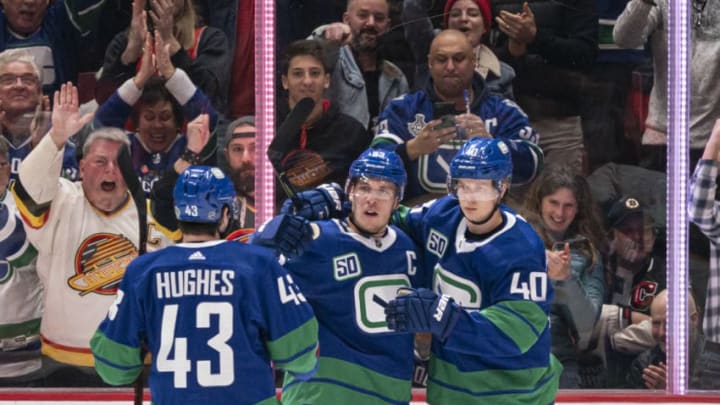The Vancouver Canucks endured a rather tulmultous 2021 season in the Scotia North Division. A compact schedule, constant cross-country travel, an imbalanced lineup, injuries, and the NHL’s largest COVID-19 outbreak contributed to an abysmal year for the Canucks and their fans in which they finished dead last in the division.
Throughout the NHL offseason, General Manager Jim Benning and his front office staff were tasked with trying to build a lineup that can contend for a playoff spot in the Western Conference’s Pacific Division. Building a winner is no quick and easy task, but it’s necessary to move fast in order to attract and keep players committed to the long-term plan of the franchise. To put it lightly, the Canucks have been very creative and active in their attempts to do so. Through the free agency market, the trade block, the draft, and the buyout market, the Canucks have re-tooled their lineup to the best of their abilities. The hope is that this new group of players will be the start of perpetual long-term success in Vancouver, ending with their eventual capture of the Stanley Cup.
Throughout this article, we’ll take a look at five major and minor moves made by Benning and the Canucks this offseason, giving them a letter grade for how we think this move benefits the team’s immediate and long-term future. Whilst it’s likely the Canucks aren’t done making acquisitions on the free agent market or done making deals with other teams, it is unlikely that these further moves will be of any major substance.
Without further ado, let’s get started!
#1: Losing Kole Lind to the Seattle Kraken in the expansion draft
Having the Seattle Kraken select Kole Lind in the expansion draft definitely sucks. A 2nd round pick in 2017, Lind only played seven games for the Canucks. Lind was one of the players most people thought would be on Seattle’s radar going into the expansion draft, so I assume Jim Benning and the Canucks knew losing was a real possibility.
Overall, the Canucks protected list consisted of no major shocks, so the disappointment in losing Lind from the fanbase has nothing to do with a mistake from the organization. They had to lose somebody, and unfortunately Kole Lind fell victim to the process. This may have a minimal affect on the Canucks plan for the next few years as it’s likely Lind would find a roster spot soon, however, this is far from a disastrous outcome.
Grade: B
#2: Blockbuster draft day trade to acquire Oliver Ekman-Larsson and Conor Garland
The major move of the Canucks aggressive 2021 offseason came just prior to the 1st round of the NHL Entry Draft. Just hours before the draft, the Canucks traded forwards Loui Eriksson, Antoine Roussel, Jay Beagle, the ninth overall pick in the 2021 draft, a second round pick in the 2022 draft and seventh round pick in the 2023 draft to the Arizona Coyotes in exchange for Oliver Ekman-Larsson and Conor Garland.
At first glance, this trade may have seemed odd to a lot of fans. However, when you look into the repercussions it has for the Canucks now, and in the future, you begin to see the trade’s true value. Giving up the 9th overall pick is not fun, especially after you’ve just had a brutal season. However, this pick was needed as an asset to ensure the Coyotes took on the three massive contracts that Eriksson, Roussel, and Beagle have. Some people question why the Canucks didn’t just hold onto these contracts as they’re all expiring after next season, however the cap space freed from this deal is crucially needed in trying to get Quinn Hughes and Elias Pettersson under contract for this season, and seasons ahead.
On top of freeing the space from these contracts, the Canucks picked up two very good players in Ekman-Larsson and Garland. Ekman-Larsson does come with a large contract himself but he could find himself playing on the top defensive pairing, trying to rediscover his form from a few years back. Garland is a very versatile top-six forward, who will play a crucial role on the Canucks for the foreseeable future. The deal nets the Canucks 4.87 million dollars in cap space and two valuable NHL players. This trade is a big win for Jim Benning and the Canucks.
